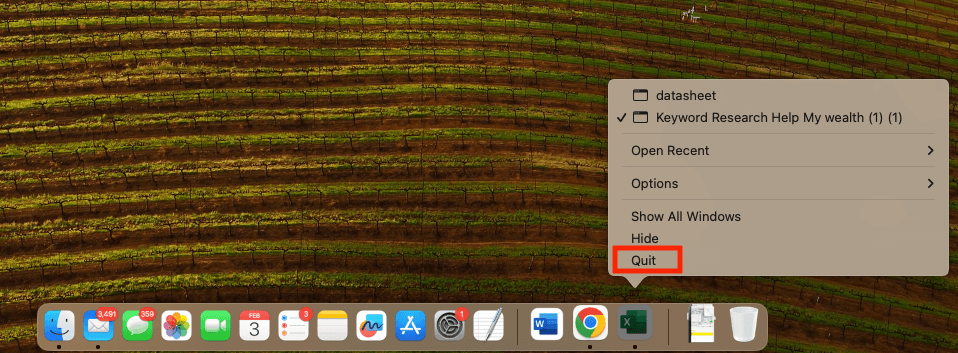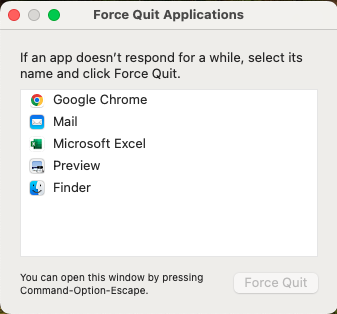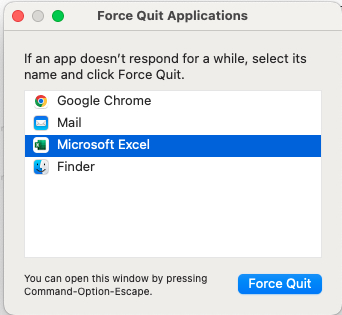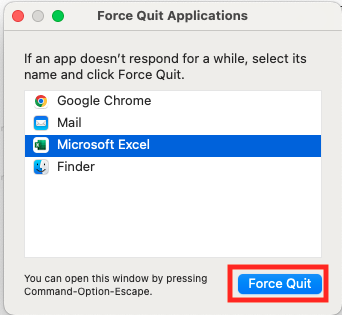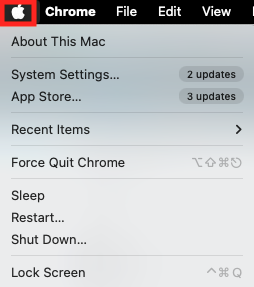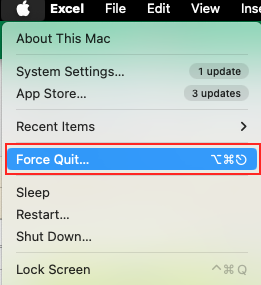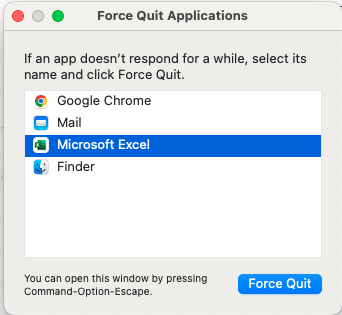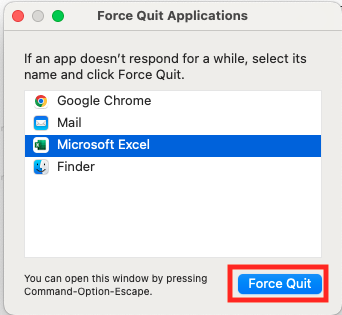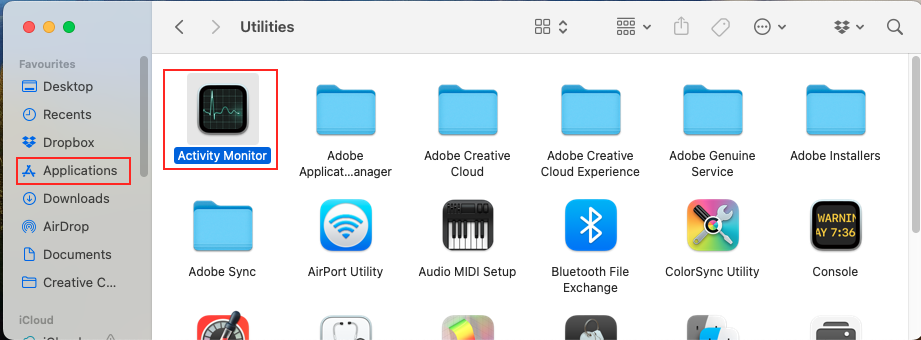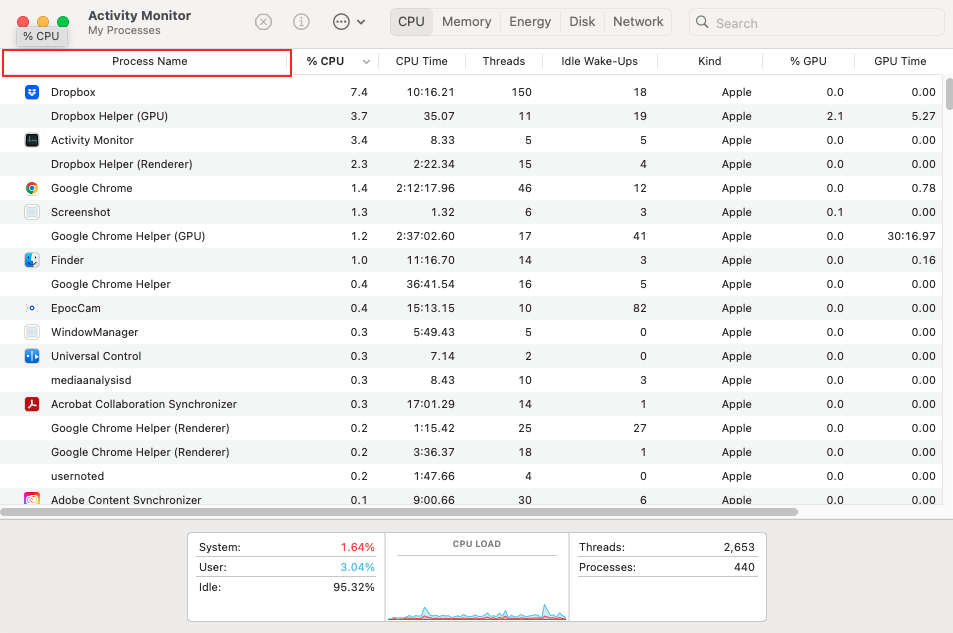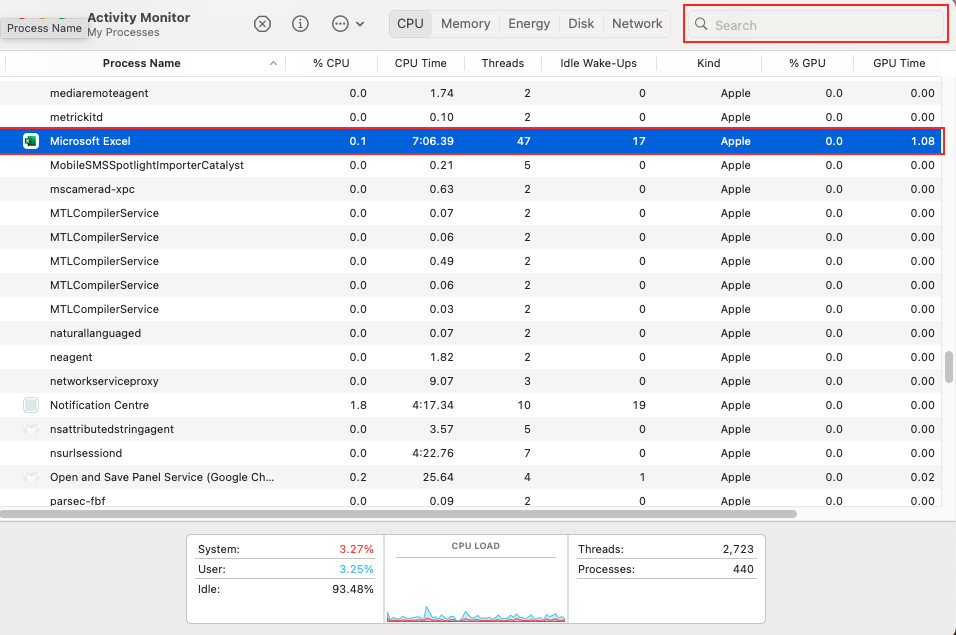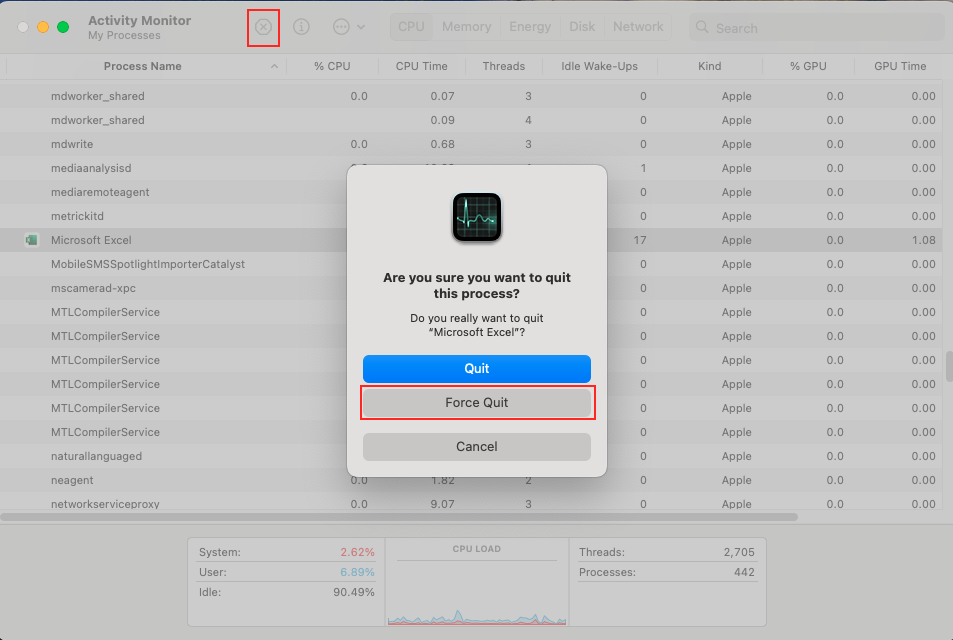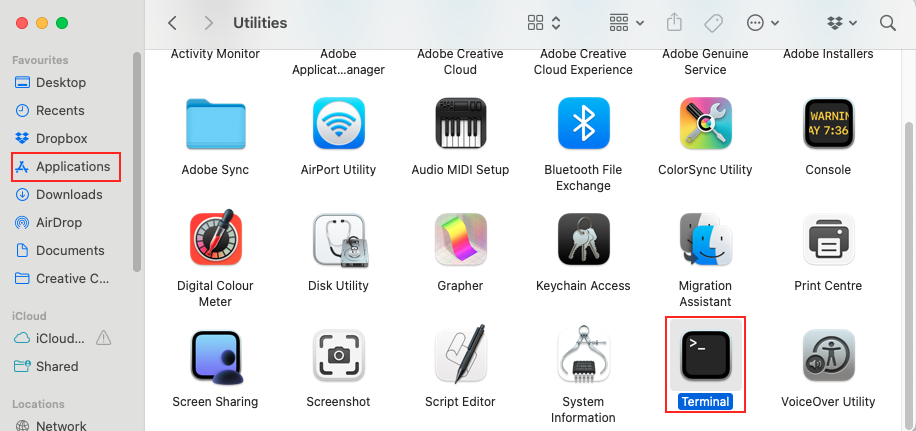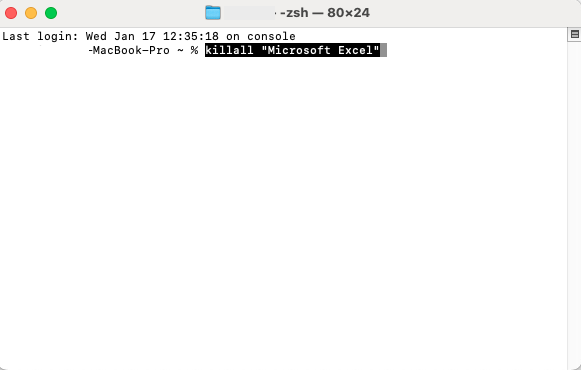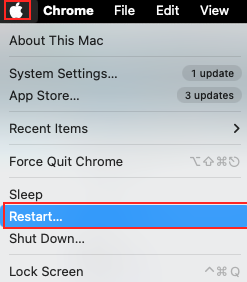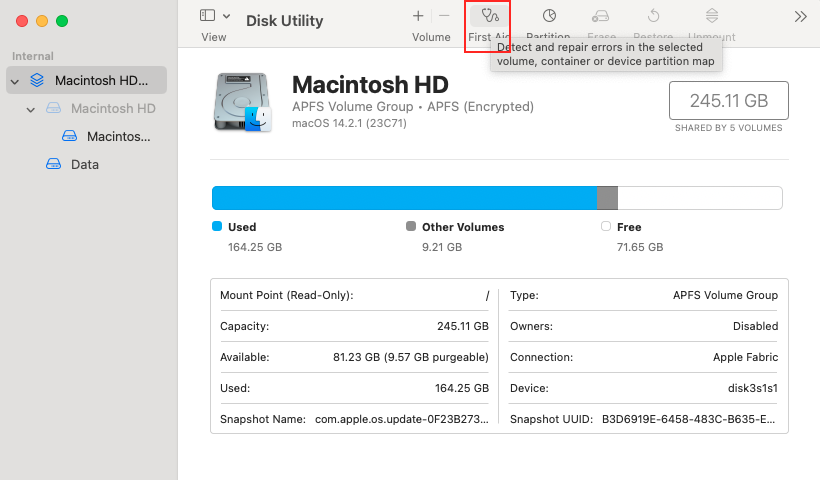How to Force Quit on Excel Mac: Step by Step
Introduction to Force Quit on Excel Mac.
At times, Microsoft Excel for Mac may freeze or fail to respond, leaving you unable to continue your work.When standard quit commands fail, knowing how to forcibly terminate Excel can save you from the frustration of a non-responsive program.
Below, we'll explore the proven methods for forcefully quitting Excel on your Mac to get you back on track with your tasks.
Introduction to Force Quit on Excel Mac
At times, Microsoft Excel for Mac may freeze or fail to respond, leaving you unable to continue your work. When standard quit commands fail, knowing how to forcibly terminate Excel can save you from the frustration of a non-responsive program. Below, we’ll explore the proven methods for forcefully quitting Excel on your Mac to get you back on track with your tasks.
Key Takeaways
- Use the keyboard shortcut Command + Option + Esc to open the Force Quit dialog and select Excel to force quit.
- Click the Apple menu, choose ‘Force Quit,’ select Excel, and then click ‘Force Quit’ again if the shortcut doesn’t work.
- If Excel doesn’t respond to Force Quit, press and hold the power button for 10 seconds to turn off your Mac and then restart it.
Understanding the Need for Force Quitting
Sometimes, your Microsoft Excel app on Mac may decide to go rogue, leaving you staring at a spinning beach ball of doom or a frozen spreadsheet. That’s when force-quitting becomes your troubleshooting hero, ensuring your productivity doesn’t take an untimely dive.
A Step-by-Step Approach to Closing Frozen Apps
When you encounter a stubborn or unresponsive application like Excel on your Mac, taking a systematic approach can save you from frustration. Here’s a simple guide to bringing things back to normal:
STEP 1: Try closing Excel normally by right-clicking on the Excel icon in the dock and selecting “Quit.”
STEP 2: If that doesn’t work, give the app a few moments—it might unfreeze itself.
STEP 3: If patience doesn’t pay off, it’s time to force quit the application.
Remember that force quitting might lead to unsaved changes being lost, so it’s best used when all other options are exhausted.
Quick Methods to Force Quit Excel on Mac
Using Keyboard Shortcuts to Instantly Close Excel
Efficiency meets necessity with keyboard shortcuts when you’re looking to exit a frozen Excel app promptly. Here’s how you can execute a swift termination:
STEP 1: Press and hold Command + Option + Esc to bring up the “Force Quit Applications” window.
STEP 2: In the list that appears, select Microsoft Excel.
STEP 3: Click on “Force Quit” to close the Excel app.
This method is a lifesaver when your mouse or trackpad isn’t cooperating, and you need to quickly regain control of your Mac. Quick and straightforward, this action often does the trick without a hitch.
Shutting Down Excel via the Apple Menu
Sometimes the simplest solutions are right in front of us—accessible from the Apple menu in the top-left corner of your screen:
STEP 1: Click on the Apple logo in your menu bar.
STEP 2: From the dropdown, select “Force Quit…” which will summon the Force Quit Applications window.
STEP 3: Highlight Microsoft Excel in the list of open apps.
STEP 4: Click the “Force Quit” button to close the app.
This method is a convenient alternative for mouse or trackpad users and provides a clear visual of which apps can be forced to quit.
Closing Excel Through Mac Utilities
Utilizing Activity Monitor to Force Quit Excel
The Activity Monitor on a Mac is like a control center for managing unruly applications. To usher a frozen Excel into closing, follow these pointers:
STEP 1: Open “Finder”, head to “Applications”, then “Utilities” and launch “Activity Monitor”.
STEP 2: Click on the “CPU” tab to sort through the running processes.
STEP 3: Look for “Microsoft Excel” in the list or use the search function in the top-right corner for quicker access.
STEP 4: Select Excel and then click the “X” button in the toolbar.
STEP 5: A dialog will appear asking if you want to quit or force quit the app; select “Force Quit”.
Force quitting through Activity Monitor is particularly useful when you need a detailed view of all active processes and wish to troubleshoot multiple issues simultaneously.
Employing Terminal Commands for Stubborn Apps
When Excel resists all standard quitting methods, it’s time to bring out the big guns with Terminal commands:
STEP 1: Open Terminal by going to “Finder” > “Applications” > “Utilities” > “Terminal”.
STEP 2: In the Terminal window, type killall "Microsoft Excel" if the app doesn’t quit promptly, replace “Microsoft Excel” with the exact name of the application.
STEP 3: Press “Return” to execute the command and force Excel to shut down.
This method is powerful but should be used cautiously — knowing the correct application name is key. It offers a fast alternative when you’re comfortable working without a graphical interface.
Troubleshooting Failed Force Quit Attempts
What to Do When Excel Won’t Respond to Force Quit
If force quitting Excel fails through all conventional methods, here’s what you can do:
- Restart your Mac: Sometimes, restarting is necessary to clear any system hiccups that prevent apps from closing.
- Check system updates: Ensure your macOS and Excel are both up-to-date, as newer versions might have bug fixes for freezing issues.
- Run disk utility: Occasionally, disk errors can cause application instability. “Disk Utility” can check and repair these issues.
Restarting Your Mac as a Last Resort
When all else fails, restarting your Mac can often be the cure-all for a stubborn Excel app that won’t close:
STEP 1: Press and hold the power button (or the Touch ID button on MacBooks with a Touch Bar).
STEP 2: Wait for the screen to turn off and the Apple logo to reappear, then release the button.
STEP 3: If a normal restart isn’t possible, press Control + Command + Power buttons to prompt a force restart.
Use restarting as a final recourse because it might lead to a loss of unsaved data. Always attempt to save your work before initiating a restart.
Preventive Measures and Best Practices
Tips to Avoid Freezing Issues in Excel
To keep Excel running smoothly on your Mac, adopt these preventive tips:
- Update Regularly: Always ensure Excel and macOS are updated to their latest versions for optimal performance and security patches.
- Clear Cache: Occasionally, clear Excel’s cache to prevent build-up that could slow down operations.
- Manage Add-ins: Keep your Excel add-ins to a minimum as too many can slow down performance.
- Monitor Resources: Keep an eye on your Mac’s CPU and memory usage, closing unnecessary applications to free up resources.
- Regular Maintenance: Conduct periodic cleanups with disk utility tools and organize your files efficiently.
By incorporating these best practices, you can typically enjoy a more seamless experience with Excel on your Mac.
Keeping Your Mac Optimized for Better Performance
Ensuring your Mac stays optimized not only enhances Excel’s performance but also the overall user experience:
- Install CleanMyMac X: This all-in-one utility helps manage disk space, remove junk files, and provides performance monitoring tools.
- Run Regular Scans: Schedule regular scans to keep the system free of unnecessary files that can bog down performance.
- Optimize Startup: Limit the number of applications that open at startup to reduce boot time and system strain.
- Regular Restart: A simple periodic restart of your Mac can clear out temporary files and keep things running smoothly.
- App Management: Keep only those apps you use and uninstall the rest to free up system resources.
Incorporate these habits into your routine to maintain a zippy and efficient Mac environment, conducive to an uninterrupted workflow.
FAQ about Force Quit Not Working on Mac
How Do I Safely Force Quit an Unresponsive App on Mac?
To safely force quit an unresponsive app on a Mac:
- Press
Command + Option + Escapeto open the Force Quit window. - Select the unresponsive app from the list.
- Click “Force Quit” to close it without affecting other programs.
How do you force quit on a Mac with a frozen keyboard?
If your Mac’s keyboard freezes, use the mouse or trackpad to access the Apple menu at the top left of the screen, and select ‘Force Quit…’. Then choose the app you need to close.
What is the shortcut key for force quit?
The shortcut key to force quit applications on a Mac is Command + Option + Esc. Press these keys simultaneously to open the “Force Quit Applications” window.
How do you control alt delete on a mac?
On a Mac, Control + Alt + Delete is replaced by Command + Option + Esc to bring up the Force Quit window. Mac doesn’t have a direct equivalent of ‘Ctrl+Alt+Delete’ since its functions are spread across different shortcuts.
Why Can’t I Force Quit Excel on My Mac?
If you can’t force quit Excel on your Mac, it’s likely due to a system-level issue that’s causing the app to hang. It might be a minor glitch, or it could signal a deeper problem with your Mac’s hardware or system resources.
- Check for system updates that might address this bug.
- Review Activity Monitor for any unusual system resource consumption.
- Consider a complete restart of your Mac if the issue persists.
- If it’s a recurring problem, contact Apple Support or visit the Genius Bar.
John Michaloudis is a former accountant and finance analyst at General Electric, a Microsoft MVP since 2020, an Amazon #1 bestselling author of 4 Microsoft Excel books and teacher of Microsoft Excel & Office over at his flagship MyExcelOnline Academy Online Course.

